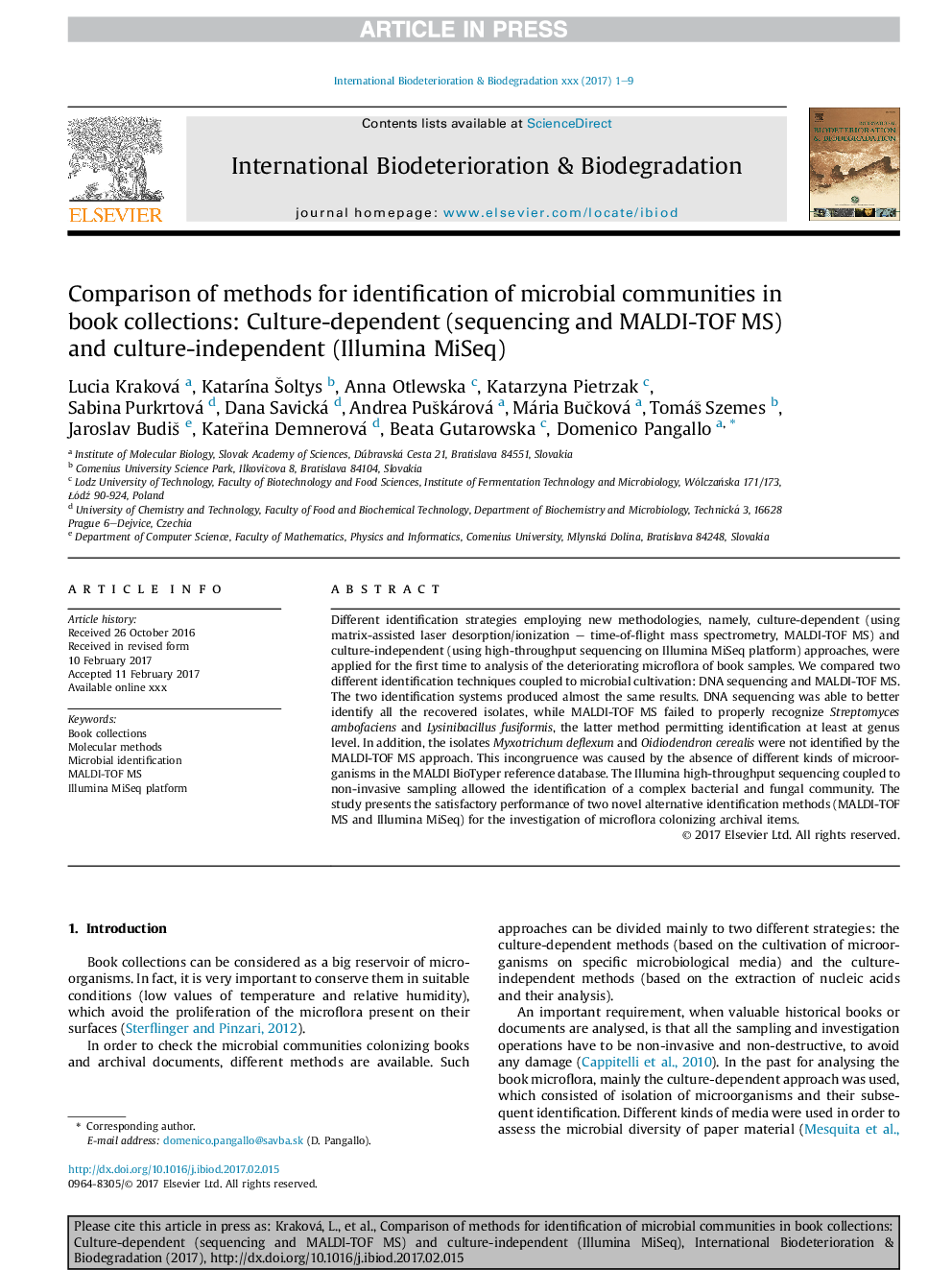| Article ID | Journal | Published Year | Pages | File Type |
|---|---|---|---|---|
| 8843793 | International Biodeterioration & Biodegradation | 2018 | 9 Pages |
Abstract
Different identification strategies employing new methodologies, namely, culture-dependent (using matrix-assisted laser desorption/ionization - time-of-flight mass spectrometry, MALDI-TOF MS) and culture-independent (using high-throughput sequencing on Illumina MiSeq platform) approaches, were applied for the first time to analysis of the deteriorating microflora of book samples. We compared two different identification techniques coupled to microbial cultivation: DNA sequencing and MALDI-TOF MS. The two identification systems produced almost the same results. DNA sequencing was able to better identify all the recovered isolates, while MALDI-TOF MS failed to properly recognize Streptomyces ambofaciens and Lysinibacillus fusiformis, the latter method permitting identification at least at genus level. In addition, the isolates Myxotrichum deflexum and Oidiodendron cerealis were not identified by the MALDI-TOF MS approach. This incongruence was caused by the absence of different kinds of microorganisms in the MALDI BioTyper reference database. The Illumina high-throughput sequencing coupled to non-invasive sampling allowed the identification of a complex bacterial and fungal community. The study presents the satisfactory performance of two novel alternative identification methods (MALDI-TOF MS and Illumina MiSeq) for the investigation of microflora colonizing archival items.
Related Topics
Life Sciences
Environmental Science
Environmental Science (General)
Authors
Lucia Kraková, KatarÃna Å oltys, Anna Otlewska, Katarzyna Pietrzak, Sabina Purkrtová, Dana Savická, Andrea PuÅ¡kárová, Mária BuÄková, TomáÅ¡ Szemes, Jaroslav BudiÅ¡, KateÅina Demnerová, Beata Gutarowska, Domenico Pangallo,
